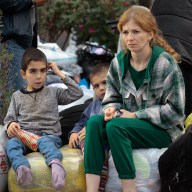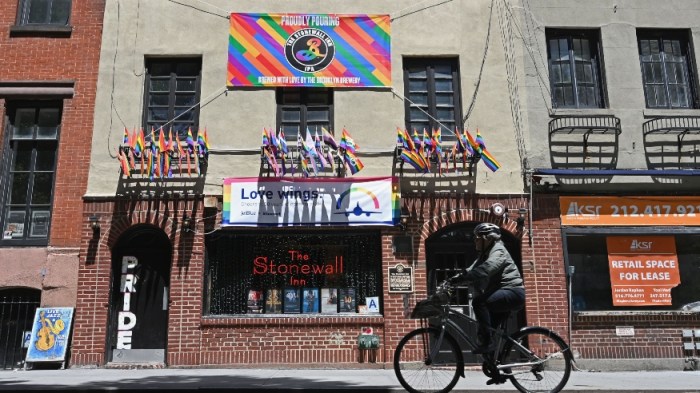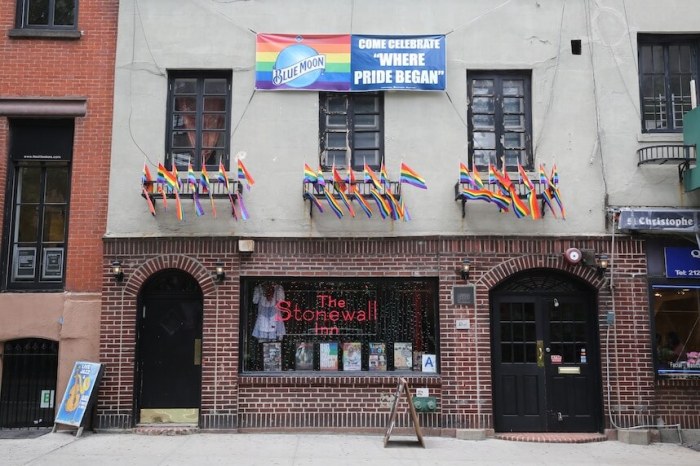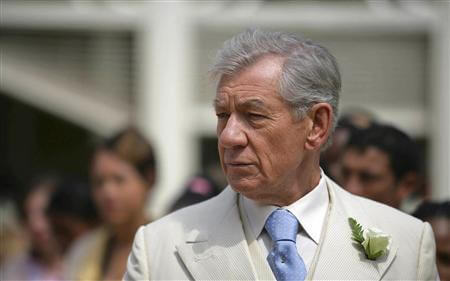What makes you feel truly alive?
What breaks your heart?
What kind of change will you help create in the world?
These are the three questions theReciprocity Foundationask each and every young person who walks into its holistic center on W. 36th Street, says co-founder Taz Tagore. The innovative organization is on the front lines of a growing homeless youth crisis, helping with both their material — and spiritual — needs.
“Most homeless youth are running away from something dangerous — homophobia, sexual abuse, physical abuse, addiction in the home,” Tagore told Metro.
“They come to NYC for the same reasons that most people do — it feels like a place to start over, to build a life that matches how they feel and what they are inspired to do.”
And so the conversation, and the healing begin.
MARKING 10 YEARS WITH ‘SEE ME’
To mark Reciprocity’s 10th year, Tagore joined forces with photographer Alex Fradkin for an inspiring docubook called “See Me: Up Close With NYC’s Homeless Youth.” Gayglers NYC, Google’s LGBT Employee Resource Group, is helping to bring wider attention to the homeless youth crisis — and the book — with a display of Fradkin’s portraits at the company’s headquarters in Chelsea to mark Pride month.. Tagore notes that 40 percent of the estimated 20,000 homeless youth in New York City are LGBT and “See Me” reflects that diversity.
“Google supports our LGBT employees in a number of ways — in taking a stand on matters of policy, putting programs in place that support Gayglers and their families, and hosting events around the world to continue the discussion on equality,” said Jamie Tredwell, Google NYC Pride’s lead coordinator. Fradkin’s photos have a distinct quality that seems to capture the stories of his subjects, which are also aptly told in words.
It’s clear in their faces that there has been, and still is, pain. But strength and hope are there too, and the sense that these kids will more than just survive, and also take flight.
“My approach is always to keep it simple and allow the portrait sessions to feel more like a conversation rather than a formal ‘photoshoot.’ Very importantly, I have spent a great deal of time getting to know each youth before the camera comes out,” he said. “By the time we are taking pictures, there is a natural familiarity, trust and a sense of collaboration that attempts to allow the unique personality of each youth to emerge naturally.” “Each session is as unique as the personalities and histories of the the youth. I have to be very sensitive to that and not allow ‘my style’ to dictate the end result,” he told Metro. “Among the happy unexpected results of this project is that this work is completely unique relative to my other portrait photographs. Basically the ‘Fradkin style’ was ditched in favor of a body of work that absolutely had to be driven by the youth.” He said the raw honesty of the young people he shot touched him.
“A number of our students during the process of creating the photographs and book felt comfortable enough to disclose their HIV status for the first time,” he revealed.
“This was extraordinarily courageous of them knowing that the project had the high likelihood of getting a great deal of exposure. That they felt comfortable and resolved to discuss this openly for the first time left me feeling deeply humbled by their courage.” Reciprocity coordinates its spiritual efforts with various social service agencies and other non-profits, like Cyndi Lauper’s “Forty to None” project, which works with LGBT youth in crisis. Tagore says the message of “See Me” is the beauty, humanity, and potential of each young person.
“Homelessness, particularly youth homelessness, is rife with stereotypes. Youth are viewed as spoiled brats, running away for adventure, or to cure boredom. We wanted ‘See Me’ to help people understand the realities of why youth wind up homeless and how our feelings towards them shouldn’t lean towards pity,” she explains. “In fact, homeless youth are incredible individuals, who survived horrible conditions, found the courage to leave and are building a powerful life from scratch. Homeless youth in our programs go on to create Emmy-nominated films, create fashion companies, start dance studios, take photos, make art, teach, become activists and most important, lend a hand to other homeless youth. They are worthy of our time and admiration.’ All proceeds from the sale of the book go to programming for homeless youth. John A. Oswald is editor-at-large at metro.us. Follow him on Twitter @nyc_oz.
















